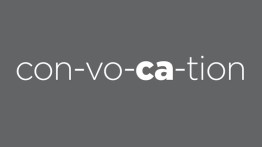From Spectatorship to Actors
POSTED ON: September 27, 2016

Jacques Ranciere’s essay called “The Emancipated Spectator” offers a comparison between two forms of theater. In one there remains a stark line between the actors and the spectators, with those in the audience functioning as passive receptors of the action on stage. In the alternative model, he describes the necessity of the spectator to be removed from the position of the observer, as if to enter the stage, not merely in empathy, but rather in a state of action. You are familiar with this idea in the works of Brecht, Artaud among others.
He extends this argument to more familiar terrain, in the arena of pedagogy, and permit me here, to quote several passages that I find salient for this occasion:
The role assigned to the schoolmaster…is to abolish the distance between his knowledge and the ignorance of the ignoramus…In pedagogical logic, the ignoramus is not simply one who does not as yet know what the schoolmaster knows…She is the one who does not know what she does not know or how to know it…What she lacks, what a pupil will always lack, unless she becomes a schoolmistress herself, is knowledge of ignorance – a knowledge of the exact distance separating knowledge from ignorance.
Ranciere goes on to argue that the poetic labor of ‘translation’ is at the heart of all learning. It is at the heart of the emancipatory practice of the schoolmaster. What he does not know is stupefying distance, distance transformed into a radical gulf that can only be ‘bridged’ by an expert. Distance is not an evil to be abolished, but the normal condition of any communication…[The schoolmaster] does not teach his pupils his knowledge, but orders them to venture into the forest of things and signs, to say what they have seen and what they think of what they have seen, to verify it and have it verified.
Returning back to the spectator, or the student: emancipation begins when we challenge the opposition between viewing and acting; when we understand that the self-evident facts that structure the relations between saying, seeing and doing themselves belong to the structure of domination and subjugation. It begins when we understand that viewing is also an action that confirms or transforms this distribution of positions. The spectator also acts, like the pupil or the scholar. She observes, selects, interprets.
She composes!




